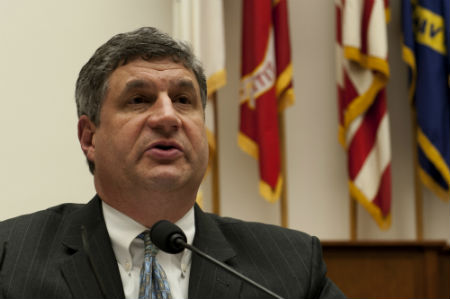 The Air Force will buy the 80-100 Long-Range Strike Bombers at whatever rate makes the most sense, service acquisition chief William LaPlante said in an interview with Air Force Magazine. Acknowledging that USAF will have a lot on its plate in the 2020s—the LRS-B, the F-35, an F-22 successor, the T-X trainer, KC-46 tanker, and other programs—LaPlante said the bomber doesn’t have to be crammed into a certain timeframe to preserve the overall funding scheme. The aircraft is “foundational” to the Air Force mission for the next 40 years, he said, and the service will trade other programs to keep it, if necessary. The rate of production, he said, will have to be fast enough to obtain learning curve efficiencies, but not so fast that the program suffers from “concurrency issues” like the F-35 experienced. As for the buy range of 80-100 airplanes, LaPlante said the figures recognize “we have never bought anything” in the numbers planned and a range is more “credible” than a specific number. However, because the $550 million average production unit cost is a key program requirement, the 80-100 was set “because you have to have … something to shoot for” to derive a unit cost estimate.
The Air Force will buy the 80-100 Long-Range Strike Bombers at whatever rate makes the most sense, service acquisition chief William LaPlante said in an interview with Air Force Magazine. Acknowledging that USAF will have a lot on its plate in the 2020s—the LRS-B, the F-35, an F-22 successor, the T-X trainer, KC-46 tanker, and other programs—LaPlante said the bomber doesn’t have to be crammed into a certain timeframe to preserve the overall funding scheme. The aircraft is “foundational” to the Air Force mission for the next 40 years, he said, and the service will trade other programs to keep it, if necessary. The rate of production, he said, will have to be fast enough to obtain learning curve efficiencies, but not so fast that the program suffers from “concurrency issues” like the F-35 experienced. As for the buy range of 80-100 airplanes, LaPlante said the figures recognize “we have never bought anything” in the numbers planned and a range is more “credible” than a specific number. However, because the $550 million average production unit cost is a key program requirement, the 80-100 was set “because you have to have … something to shoot for” to derive a unit cost estimate.
The Air Force on Jan. 6 released nearly a dozen photos of F-22 and F-35 fighters returning to Puerto Rico after supporting the raid to capture Venezuelan President Nicolás Maduro—the first official images of forces who participated in Operation Absolute Resolve.

